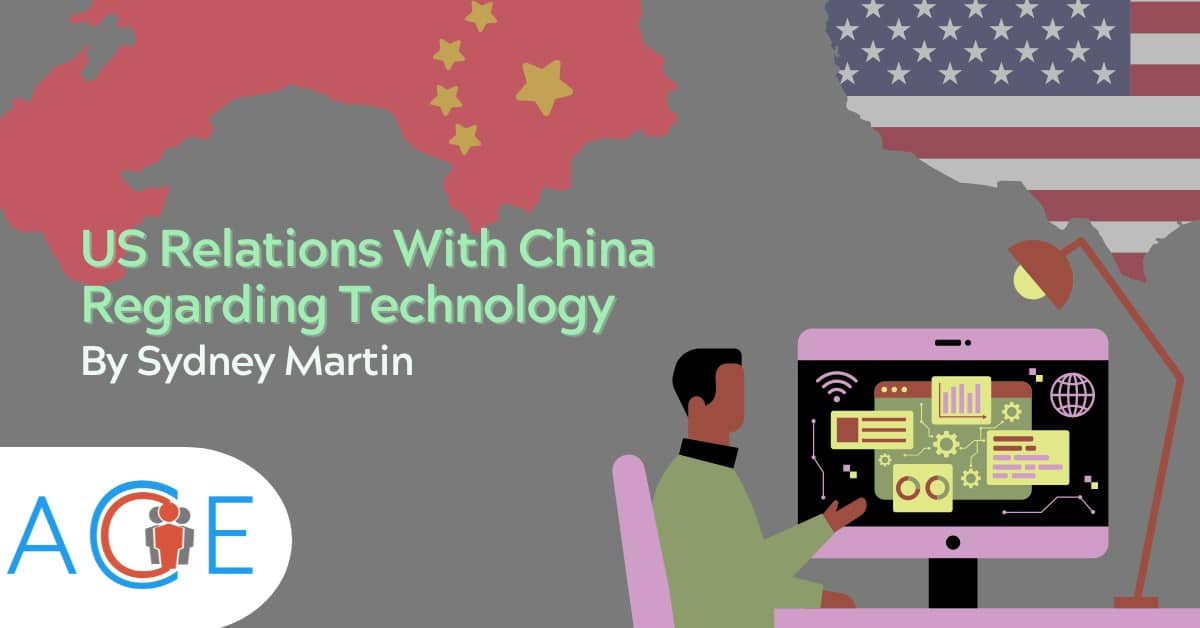Introduction
In recent decades, trade between China and the US has significantly grown, with China being a major source of imports for the United States and a top market for American goods and services. Despite the economic interdependence, the relationship is complex. The trade war that initiated in 2018 exemplifies the complexities in this dynamic.
Background Information Of Trade Between China and US
For about three decades following the establishment of the People’s Republic of China in 1949, trade between China and the United States was nearly nonexistent due to severed relations. The situation changed in 1979 when diplomatic ties were restored, leading to a significant surge in trade from a few billion to hundreds of billions of dollars annually. Deng Xiaoping’s economic reforms in the late 1970s played a pivotal role, with the Chinese government, under his leadership, easing fiscal restrictions and promoting business expansion. As part of efforts to boost trade and investment, China applied to rejoin the General Agreement on Tariffs and Trade, the predecessor to the WTO, in 1986.
As a condition of entry, Beijing pledged to execute a wide variety of economic reforms, including major import tariff reductions, IP protections, and improved law and order transparency. At this time, President Bill Clinton and his advisors argued that incorporating China in the international trading system would be advantageous for both the US and China, helping to foster economic and eventually democratic transition. However, American labor unions and many congressional Democrats rejected the idea, claiming that China’s inadequate environmental and worker standards would inspire similar behavior elsewhere and lead to a “race to the bottom.”
Even before China joined the WTO, trade between the two countries began to grow. WTO membership ensured “permanent normal trade relations,” providing further security for American and foreign companies to produce in China and export to the United States. Trade expanded significantly; the value of American goods bought from China increased from about $100 billion in 2001 to $500 billion in 2021. This rise in imports is partially explained by China’s significant contribution to global supply chains, since Chinese businesses assemble products for export to the United States using materials from all around the world.
Trade War
The trade war between China and the United States was launched nearly five years ago by then-President Donald Trump. The US levied duties on approximately $350 billion in Chinese imports, and China countered by imposing taxes on an additional $100 billion in imports, as permitted by WTO rules. President Trump’s goal was to put pressure on Beijing to change what was perceived by some as unfair trade policies and decouple the US economy from China’s economy. To avert a trade deficit, President Trump levied hefty tariffs on China. Following the tariffs, China’s access to high-tech US products was restricted, as were foreign investments with security concerns, as well as claims of unfair Chinese business practices.
Summary and Results of the Phase One Trade Agreement
The Economic and Trade Agreement between the United States of America and the People’s Republic of China: Phase One went into force on February 14, 2020. China committed to expand its purchases of particular US goods and services by $200 billion beyond baseline levels set in 2017 for 2020 and 2021. The impact can be summarized as follows:
Positive Aspects
- Between January 2020 and December 2021, China imported $235.3 billion in covered products from the US, while the US exported $210.1 billion to China. In the end, China bought 62% (for imports from China) or 60% (for exports from the US) of all the goods covered by the phase one agreement.
- Goods made from Covered Manufacture Products went beyond the phase one commitment by 61 percent (for imports from China) or 59 percent (for exports from the US).
- China’s phase one commitment was spent on purchases of covered agricultural products to the tune of 77 percent (for imports from China) or 83 percent (for exports from the US).
- China’s purchases of covered energy products accounted for 47 percent (for imports from China) or 37 percent (for exports from the US) of the phase one commitment.
- All uncovered products, which in 2017 made up 29% of China’s total imports from the US and 27% of the US’s total exports to China, were not expressly covered by the phase one agreement. In 2021, China imported unlimited goods worth $42.0 billion from the US, down 8% from 2017. The total value of all unreported US exports to China during that time was $35.0 billion, up 1% from the prior year.
The Phase One transaction achieved some success despite notable restrictions and challenges. It contributed to crucial structural reforms in China’s intellectual property laws, facilitated easier access for U.S. agricultural exports, and improved market entry for U.S. financial services firms. Notably, goods made from Covered Manufacture Products surpassed the Phase One commitment by 61% for imports from China and 59% for exports from the United States. Although crude oil prices briefly turned negative in April 2020, impacting sales value, they had rebounded by the fall of 2021.
Negative Aspects
The Phase One deal is largely seen as unsuccessful, with China only fulfilling about 60% of the specified goods trade amount. The ambitious purchasing targets, perceived as unattainable by many, were further hindered by the Covid-19 pandemic disrupting trade flows.
If U.S. services exports to China had expanded at the same rate as exports to the rest of the world from 2018 to 2021, and U.S. goods exports to China of Phase One products had increased at the same pace as China’s purchases of those products globally, the overall U.S. goods and services sent to China would have decreased by approximately 19% from 2018 to 2021 due to the trade conflict and the Phase One deal. These projections suggest that the U.S. could have avoided trade war export losses of $24 billion (16%) in 2018 and $30 billion (20%) in 2019. Under Phase One, exports would have increased by a combined $27 billion (18%) in 2020 and $40 billion (23%) in 2021. Without the export losses, American taxpayers would not have paid tens of billions of dollars in agricultural subsidies in 2018–19.
Phase Two
Although the details of phase two have not yet been finalized, it was said that the Phase One agreement only addressed the most straightforward issues in regard to US-China trade. If the agreement is to have any meaning, phase two will need to address more complex topics. During United States Trade Representative Katherine Tai’s confirmation hearing, Senator Ben Sasse stated that the Phase Two agreement should address “critical issues” like excess capacity, state-owned firms, state-sponsored cyber-enabled intellectual property theft, restrictions on cross-border data transfers, and regulatory transparency that weren’t adequately addressed or achieved in Phase One. Similar to this, the U.S. Chamber of Commerce and several business associations mentioned issues that should be addressed in a Phase Two agreement, including subsidies, cybersecurity, digital trade and data governance, and competition policy.
A Phase Two agreement has also been sought by business organizations. In accordance with a report from the American Chamber of Commerce in South China from the previous year, “Phase One will go down as one of the biggest political and economic failures in a generation unless the U.S. and China immediately return to the negotiating table to start Phase Two, a step that China has also indicated is not imminent.” The National Association of Manufacturers has additionally argued in favor of a Phase Two deal “to improve trade certainty.”


